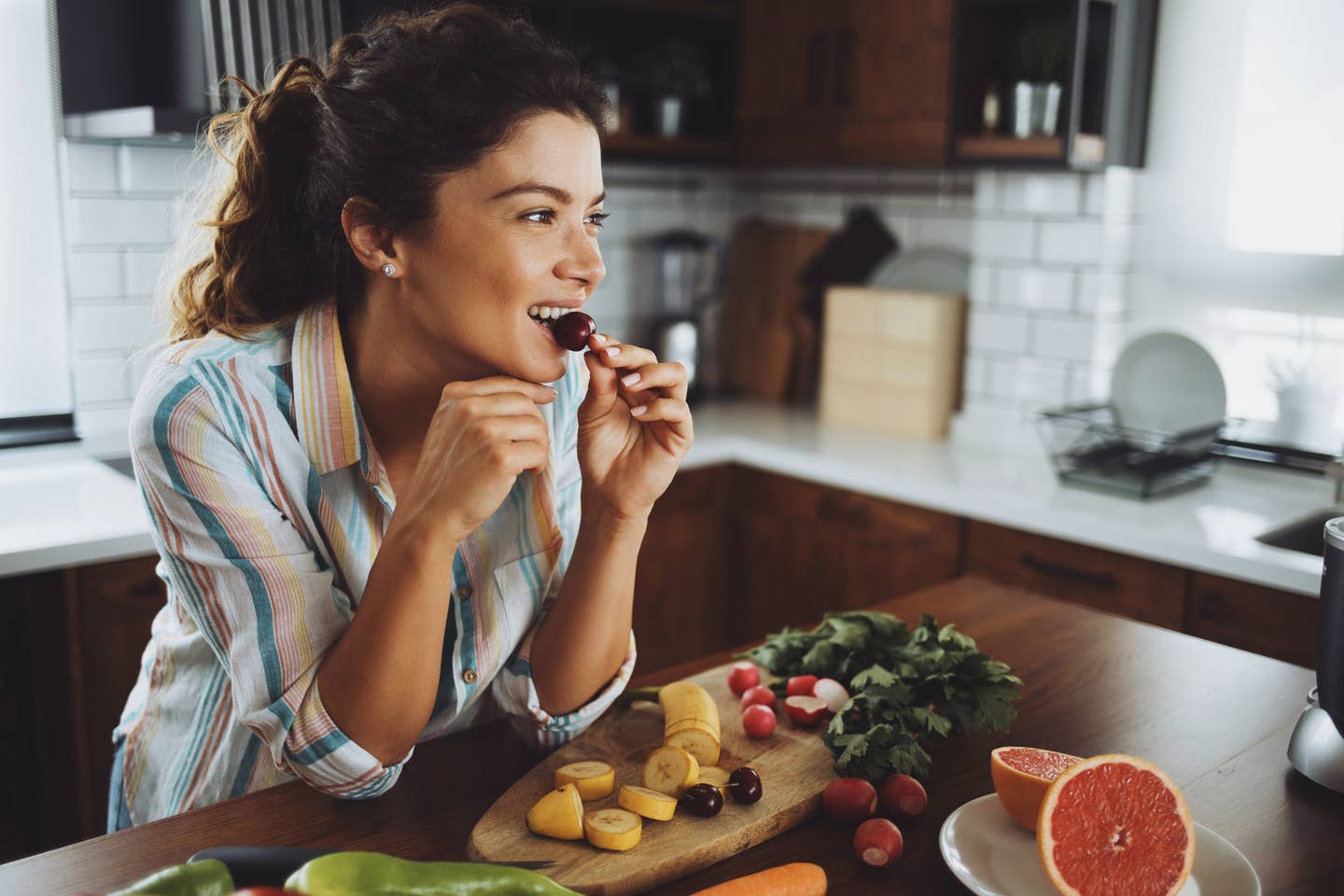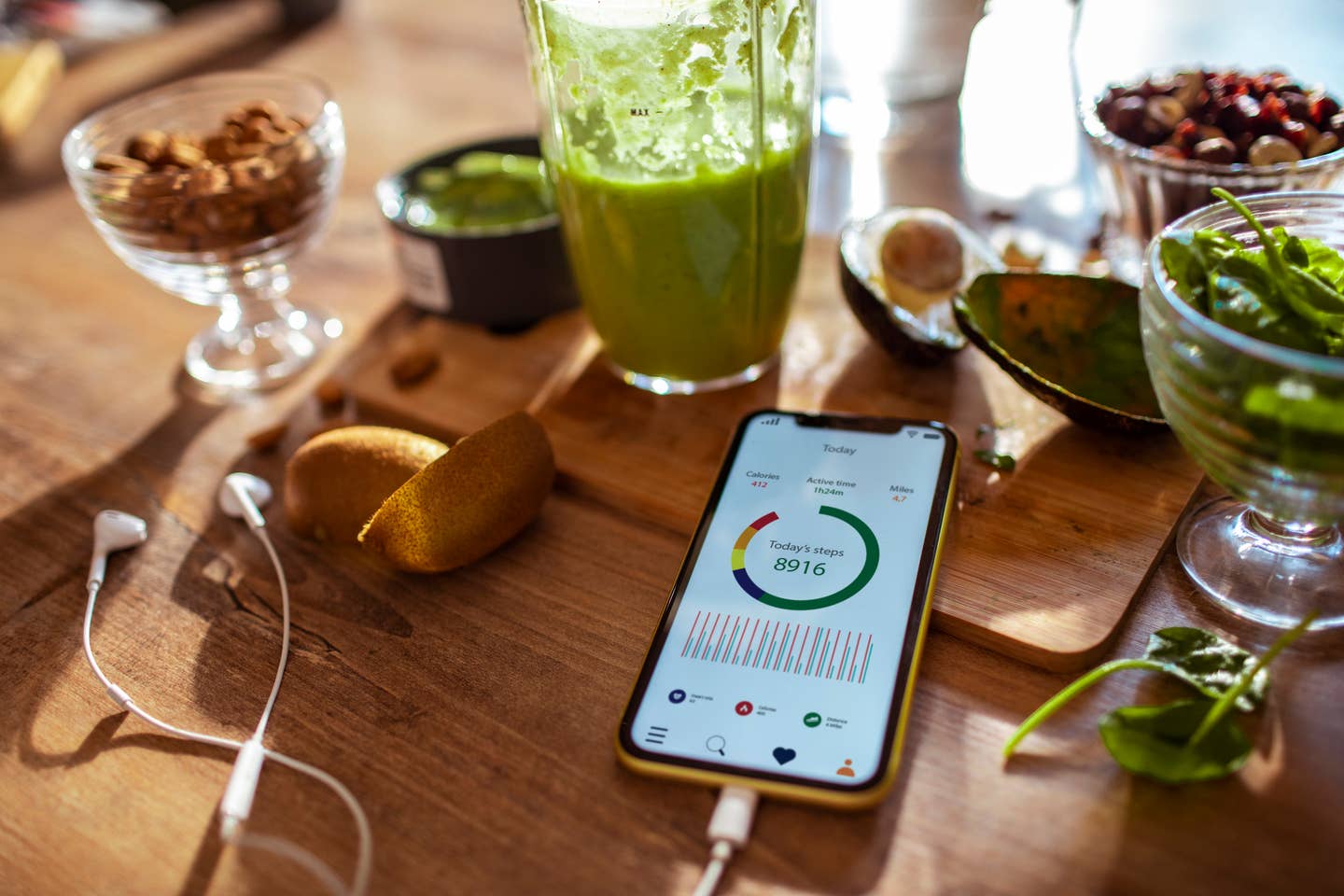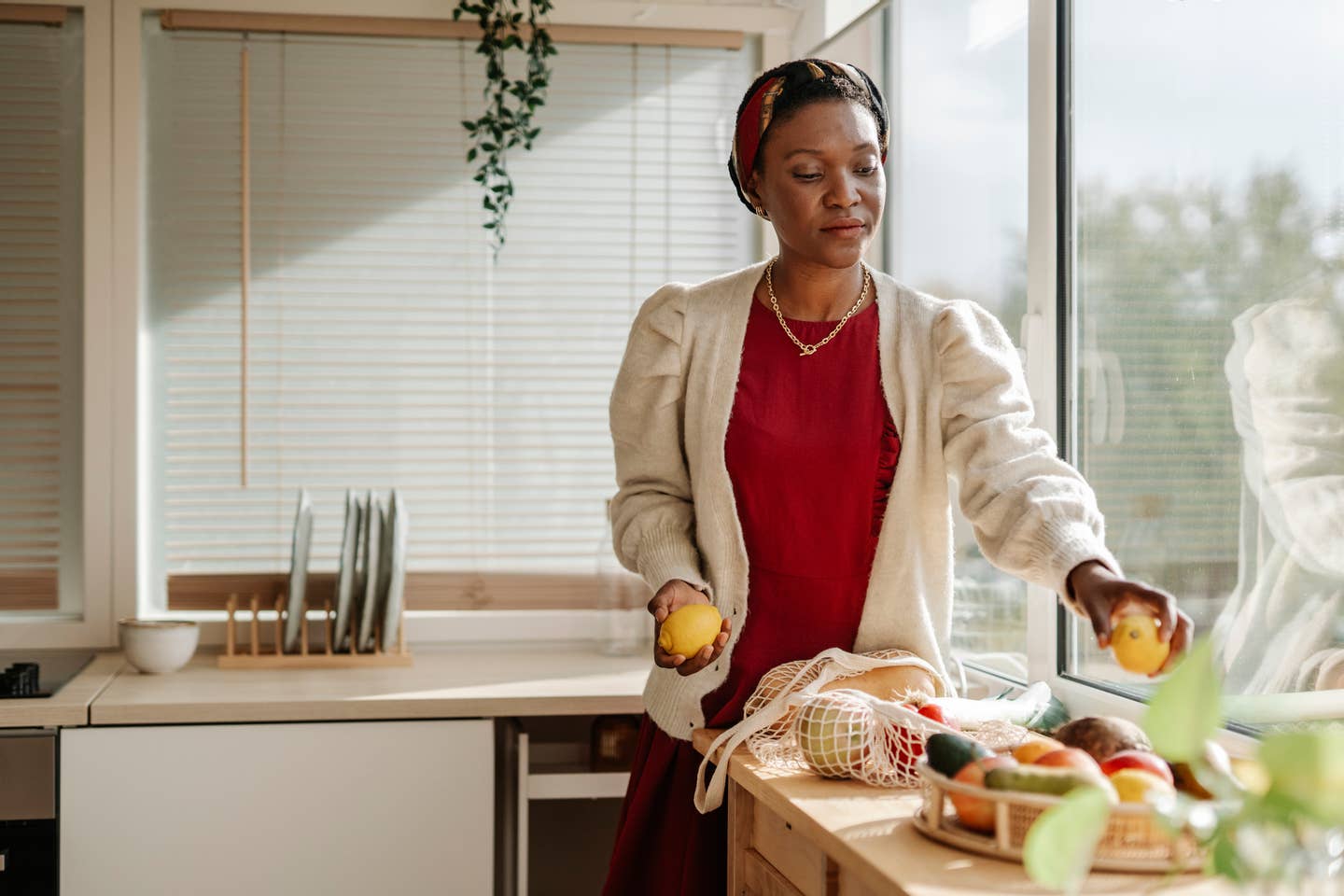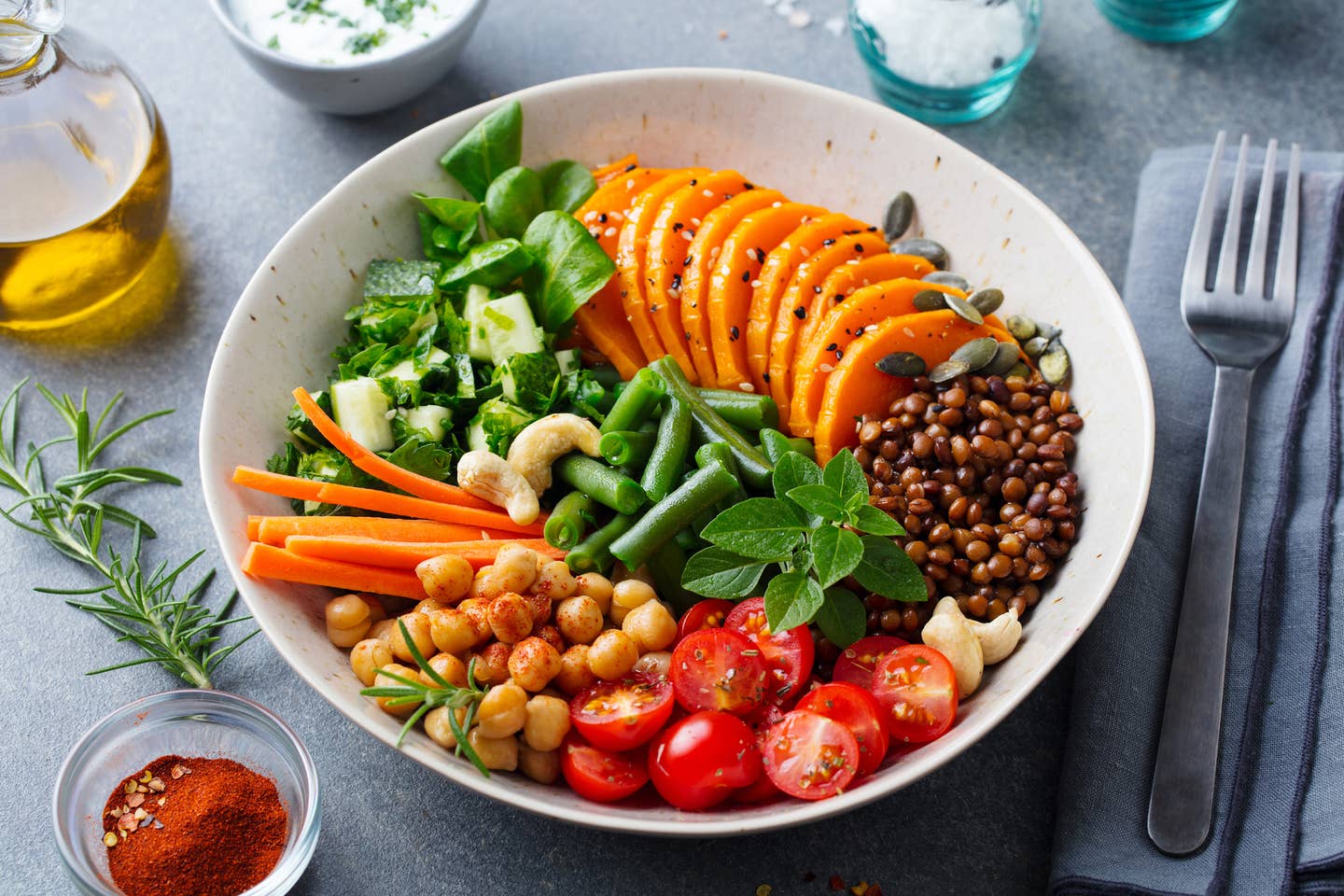
To Lose Weight and Belly Fat, Ditch the Calorie Calculator and Try This Instead
If you are among the 75 percent of Americans who gained weight during the pandemic or are among the 63 percent now working to get off the unwanted pounds and get fit for spring, there are simple strategies that will not only help you shed fat, but also get heart healthier in the bargain, according to Kimberly Gomer, RD, Director of Nutrition for the Pritikin Longevity Center. Her first tip: Ditch the calorie calculator. She tells you what to count instead, and her advice makes so much sense.
Gomer shares her choices for the best foods and strategies to help anyone who wants to lose weight and belly fat, and do it in a way that is also good for their long-term heart health. It turns out the same foods that will make it easier to burn fat faster now are also those that are beneficial to your heart down the road.
Plus, you may have what 100 million Americans are dealing with, a condition called "insulin resistance" that makes you put on belly fat and convert your caloric intake to fat, instead of burning it off. If you are in that category, Gomer has helpful tips for you, too, which will help reverse the trend and tell your body to burn fat, not store it.
Here is Gomer's list of the best foods to eat, and ones to avoid, as well as other useful tips to lose weight and lower your cholesterol, keep blood sugar in check, and generally eat healthier. She has coached over 800 people and helps them find what works for them. If you want to immerse yourself into the Pritikin way of reshaping your diet, your body, and your health outcomes, you can always sign up for a two-week program at their resort-like South Florida center, which is both a destination and a life-changer, Gomer says.
Of the 100,000 people who have checked in to learn to eat better, most of them have left with a new approach to food, several pounds lost, and having lowered their markers for heart disease enough to eventually be able to ditch the meds. For the rest of us on a weight loss journey but without the time or budget for a two-week health time out, Gomer's strategies work wherever you are.
5 Easy Ways to Lose Weight and Reduce Belly Fat
1. Stop counting calories and start counting nutrients.
Calories act differently depending on the type of food you're eating (sugar vs. healthy whole foods), and if you are counting calories instead of piling your plate high with vegetables, fruit, whole grains, and high-fiber foods, you are missing out on a major aspect of healthy weight loss, Gomer says. Instead of worrying about the number of calories you take in, start to see food in terms of nutrients like vitamins, antioxidants, and all-important fiber, which is found in whole plant-based foods.
"Where are those calories coming from? If they're from sugar and animal fat, chances are you are not going to lose weight.," Gomer explains. "But if you have a big salad full of healthy whole foods like greens, beans, water-dense foods like cucumbers, and fiber-rich foods like avocado, the calories don't really matter. Your body needs these nutrients and will burn them off and release the energy to your bloodstream slowly, so you never experience the spike in blood sugar that tells your body to store fat."
So instead of thinking about calories, think about nutrients and choose the most nutrient-dense foods you can find, she adds. If you are used to thinking about calories, ask yourself, what is the density of that food? Where are the calories from? Compare one food to another food: What is the density of food A vs. food B? A pound of food that is waterlogged such as vegetables will be full of water. As food gets drier the density goes up. The highest density food is oil. So most people ask: How should I lose weight? The Mediterranean diet is popular, but that is heavy in oil and wine. People have been putting oil on everything. it adds up. Instead, choose foods like vegetables that are nutrient-filled, and will fill you up!
2. Avoid oils, which are full of hidden calories that add up.
When someone comes into Pritikin with heart issues and is hoping to lower their cholesterol, lose weight and get off their meds, the first thing that Gomer and her team will tell them is that they should avoid oils and especially saturated fats from animal products like meat and dairy. But even if you are not dieting for heart health, you should cut down on the oil you cook with, or dress your salad with, since even the ubiquitous olive oil one of the most calorie-dense foods on your plate.
Consider this: One tablespoon of extra virgin olive oil contains 126 calories and 14 grams of fat. One Oreo cookie has approximately 53 calories, and 2.3 grams of fat. It also has about 8.3 grams of carbohydrates. So while we don't want you counting calories, you do need to be aware that oil has more calories and fat than a cookie.
How much oil you allow into your diet depends on your goals, but both for heart health and weight loss, oil is an overused diet culprit, and for anyone looking to lose weight Gomer's advice is to try to minimalize the amount of olive oil on your salad or in your stir fry because of the number of calories it contains.
Keep your nut intake to a small serving a day, since nuts are both full of oil and calories, although they are also full of fiber and protein, so a little bit goes a long way. "A woman who loves Oreos will tell me that she got rid of the Oreos and instead eats 2 small handfuls of almonds a day. What happens to weight? She will tell me that she has gained 20 pounds," Gomer says. She is shocked but I am not since 1cup of almonds has over 800 calories. The high fat, high protein diets don't want to die. but what happens to their cholesterol on these plans? It goes crazy."
Still, the brain needs omega-3 healthy fats so once you get your weight under control you may want to add back in a small serving of nuts or seeds, but just use less oil, Gomer adds.
3. Eat foods that will release energy slowly into the body, keeping blood sugar low
High fiber foods are your diet's best friend since when you eat fiber, your body releases that energy slowly, like burning a candle instead of a match. That in turn keeps your blood sugar low and steady throughout the day and avoids surges that can tell the body to release insulin, the messenger that signals "too much sugar in the blood" so store the excess as fat. The best high-fiber foods to add to your plate are these, Gomer says:
Eat Leafy greens such as kale and spinach, but any salad greens will work, including romaine if that is what you prefer. "Greens are the bomb," she says. It's as simple as that.
Pile on the Cruciferous vegetables such as cauliflower, broccoli, Brussel sprouts, and cabbage. Shoot for 25 to 35 grams of fiber a day, and don't worry about the calories in these foods since your body will have to work harder to digest them in the first place, and they help your gut health and how you metabolize everything else you eat as well.
Add tomatoes and peppers, especially colorful ones. You've heard it before but eat the colors of the rainbow, since you get phytochemicals and antioxidants in these pigment-rich vegetables, so your body will benefit from the vitamins like C, E, A, all of which help you build a strong immune system, plus lycopene, which is known to benefit heart health and help your body fight certain kinds of cancer.
Choose root vegetables like beets and carrots to your salads. When you eat root vegetables you absorb all the healthy antioxidants from these colorful vegetables. Beets, in particular, have folate (vitamin B9), plus manganese, potassium, iron, and vitamin C. Studies show beets improved circulation, lower blood pressure, and increase exercise performance. Carrots, meanwhile, contain antioxidants such as betacarotene which has been proven to reduce the number of free radicals in the body and help protect against certain cancers.
Bottom line: Add more vegetables to every meal. And eat what you like. If you don't like zucchini then find vegetables that you do like.
4. Get moving. Exercise daily. Do cardio but add in strength training.
We are sedentary, not just because of working from home, but as a culture. We sit in cars, at our desks, and wherever we go, we plop down. "As a nutritionist, I am always asked: What food would help me lose weight? But I want to talk about the fact that muscle is metabolic currency, and the more muscle tone you build, the more energy you burn just sitting in your chair," Gomer explains.
That means that instead of just doing cardio every day, people need to add in strength training. "People love cardio but they don't do strength training," she observes. "They avoid strength training. So along with walking, running, swimming, or cycling, not in place of anything, we all need to build strong muscles to be healthy."
What other habits are going to get you healthier? Walking everywhere you can. Daily meditation, yoga, or stretching. All these things going to benefit your health by helping you de-stress. People spend hours on their phones and they can't unwind and get to sleep. If you can't sleep you can't lose weight and be healthy. Anxiety is something that gets in the way.
Another helpful tip: I tell people to cut off all eating after dinner and taking a nice walk after dinner. It's a wonderful habit and helps you wind down and destress before bed.
5. Find out if you have insulin resistance, which leads to more belly fat
Here's a stunning fact: 100 million Americans have insulin resistance. What that means is your insulin gets stuck in the "on" position and essentially tells your body to take everything you eat and store it as fat, especially belly fat, that is readily available for when you need energy fast. Gomer explains: Insulin's job is to take sugar and cart it off to the cells, but if they are already full (of glycogen) and blood sugar is rising, it then carts it off to storage, which is fat. When you have too much blood sugar, insulin is working overtime, and your body stops listening to the message that you're full. Insulin "resistance" is the result and it makes people think they are hungry when they are not, so they eat, further piling on the calories, and it becomes harder to lose weight.
"At Pritikin, we do an insulin test. and it's like finding out you have pre-pre-pre-diabetes," she says. You can get this simple test done by your doctor, but don't be surprised if you are among the 1 in 3 Americans who have the problem. "Insulin resistance makes losing weight hard since you're the person who eats the whole breadbasket."
Insulin is the hormone responsible for the blood sugar balance in the body. But long before someone gets diabetes they start out with pre-diabetes. It is even more prevalent in people over 60, Gomer says: 50 percent of people over 60 have this condition. "They have it but they don't understand why they can't stop eating once they start. They say to themselves: 'I'll just eat one cracker,' but then they eat the whole box since their satiety cues are not working. They don't do this with beans and cabbage because those foods are low in carbs. It's the insulin that is promoting hunger. So knowing your insulin level will help you understand. Under 7 is normal and above 7 is insulin resistant. If you are at 9 you are insulin resistant.
"When we eat and blood sugar goes up. Insulin is like a key that opens a gate and your cells can get the sugar or energy they need. With insulin resistance, the key gets sticky and then the body says... Wait you didn't hear me, I am trying to close this door. Instead, you eat more sugar. When this happens the body can not keep the blood sugar stable," Gomer explains. "When you have insulin resistance, then we know the mechanism." The first thing you need to do is lower your sugar intake and eat more high-fiber foods.
The goal is to reduce belly fat, Gomer says. "That is where insulin rears its ugly head. If you lose belly fat your insulin resistance will go down. So to lose weight is good, no matter how you do it."
Final Strategy: Better is Better. You don't have to be perfect.
"I like to say; Better is Better. You don't have to be perfect," Gomer tells clients."If you are eating vegetables every day and adding more high-fiber foods to every meal, then you are on your way. I don't care what else they are doing. If they eat more vegetables, they will get healthier." She says that there is nothing better than helping change lives through healthy dietary changes: "It is very exciting to be part of that. Teaching people to eat food that you know where it came from... it's exciting and awesome."
"Miami is full of all these fancy cars, Gomer observes. "People put in the best premium gasoline they can. For your body, that means: Eat as many vegetables as you can. When you take out all the meat and heavy foods and start to eat more vegetables, legumes, and high-fiber food, that's filling your body up on premium. That's how your body runs best."
The Top 20 Veggies with the Most Protein
1. Soy Beans
Soybeans are a legume but they are such a great source of protein that we had to lead the veggie list with it. There is more protein in just one ounce of soybeans than a cup of sliced avocado! 1 cup equals Protein - 28.6g Calories - 298 Carbs - 17.1g Fiber - 10.3g Calcium - 175mg
2. Peas
If the pod, that peas are grown in, is split down the middle, that is an indicator they are ripe. Seeds inside the pod vary and can be green, white or yellow. 1 cup equals Protein - 8.6g Calories - 134 Carbs - 25g Fiber - 8.8g Calcium - 43.2 mg
3. Corn
Fresh corn is a great source of energy for those who like to stay active. Protein isn't all that corn has to offer. Corn provides the body with potassium and B vitamins. 1 cup equals Protein - 5.4g Calories - 177 Carbs - 123g Fiber - 4.6g Calcium - 4.9mg
4. Artichoke Hearts
Artichokes are part of the sunflower family. The fiber in artichoke hearts is great for supporting digestion. 1 cup equals Protein - 4.8g Calories - 89 Carbs - 20g Fiber - 14.4g Calcium - 35.2mg
5. Asparagus
If not properly stored, Asparagus tends to go bad quickly, To elongate freshness, put damp paper towels around the stems, or place the entire asparagus bunch in a cup of water (like flowers) to maintain freshness longer. 1 cup equals Protein - 4.4g Calories - 39.6 Carbs - 7.4g Fiber - 3.6g Calcium - 41.4mg
6. Brussel Sprouts
Brussel sprouts have more Vitamin C than an orange. If your Brussel sprouts have a rancid odor that is an indicator you overcooked them. The smell occurs because the sprouts are composed of a great amount of sulforaphane. 1 cup equals Protein - 4g Calories - 56.2 Carbs - 40g Fiber - 4g Calcium - 56.2mg
7. Broccoli
If you are trying to lose weight broccoli is a great addition to your diet because it consists of 90 water and is also high in fiber. 1 cup (chopped) equals Protein - 3.8g Calories - 54.6Carbs - 11.2g Fiber - 5.2g Calcium - 62.4mg
8. Mustard Greens
Mustard greens provide the body with tons of Vitamin A, Vitamin C, Vitamin K and fiber. Adding steamed mustard greens into your diet has been known to lower cholesterol and reduce inflammation. 1 cup equals Protein - 3.2 g Calories - 21 Carbs - 2.9g Fiber - 2.8g Calcium - 104mg
9. Avocado
Avocado is commonly mistaken as a vegetable but it is technically a fruit. This fruit had to be included in our veggie list because it isn't just tasty but super nutritious. Avocados are packed with protein but they are a great source of potassium and fiber. Avocados are a great addition to any salad, sandwich and even smoothie! 1 cup equals Protein - 3.0 g Calories - 240 Carbs - 12.8 g Fiber - 10.1g Calcium - 18 mg
Onions are an unappreciated food hero since they provide 20 percent of your daily Vitamin C and deliver an abundance of antioxidants that can reduce inflammation. 1 cup (chopped) equals Protein - 2.9g Calories - 92.4 Carbs - 21.3g Fiber - 2.9g Calcium - 46.2mg
11. Beets
The entire beetroot is edible including the leaves which contain loads of vitamin A, calcium, iron and potassium. Beetroot is high in sugar but is considered one of the most nutritious veggies used in salads and soups. 1 cup equals Protein - 2.8 g Calories - 74.8 Carbs - 17g Fiber - 3.4g Calcium - 27.2mg
12. Oyster Mushrooms
Oyster mushrooms are commonly seen in Chinese dishes. They grow best in a controlled environment indoors. Oyster mushrooms have so many nutrients to offer besides protein such as iron, calcium, zinc and folic acid. 1 cup (raw and sliced) equals Protein - 2.8g Calories - 37 Carbs - 5.6g Fiber - 2.0g Calcium - 2.6mg
13. Bok Choy
Bok Choy is a member of the mustard family. One of the oldest cultivated vegetables in the world, Bok Choy means "white vegetable” and is a great source of vitamins A, C, B6, K, and E, magnesium, potassium, iron, manganese, and calcium. 1 cup equals Protein - 2.7 g Calories - 20.4 Carbs - 3.1g Fiber - 1.7g Calcium - 158mg
14. Green Beans
Green beans are a great source of vitamins B, C and K, and minerals such as magnesium, iron and manganese. Green beans should be cooked before eating, to destroy lectins. China is the biggest grower of green beans in the world, exporting over 15 million tons a year. 1 cup equals Protein - 1.8 g Calories - 31 Carbs - 7 g Fiber - 2.7 g Calcium - 37 mg
15. Cauliflower
The most nutritious way to consume cauliflower is steamed. Don't get intimidated by orange, purple or green cauliflower. All three types have the same benefits as white cauliflower. 1 cup equals Protein - 2.2g Calories - 28.6 Carbs - 5.4g Fiber - 2.8g Calcium - 19.8mg
16. Turnip
You can eat the entire plant, root and leaves. The turnip root is high in vitamin C and the greens are high in vitamins A, C, E, B6 and K, believed to counter inflammation. Add turnip roots to soup, or mash them. Add them to salads. 1 cup equals Protein - 1.6g Calories - 28.8 Carbs - 6.3g Fiber - 5.0g Calcium - 197mg
17. Alfalfa Sprouts
Alfalfa sprouts might be little but they sure are powerful. Plus they're quick and easy to grow. They are loaded with Vitamin C, Vitamin K, Iron and more. But because they have been known to carry bacteria, make sure to fully cook alfalfa sprouts if you have a fragile immune system or are pregnant. 1 cup equals Protein - 1.3 g Calories - 8 Carbs - 0.7 g Fiber - 0.6 g Calcium - 10.6 mg
18. Tomatoes
Keep your tomatoes fresher for longer by storing them stem down. When exposed to sunlight the Vitamin C in a tomato will diminish. 1 cup equals Protein - 1.3g Calories - 26.8 Carbs - 5.8g Fiber - 1.8g Calcium - 14.9mg
19. Zucchini
Zucchini has an abundance of potassium, even more than a banana! The reason zucchini isn't high in calories is that it is made up of 95% water. 1 cup equals Protein - 1.2g Calories - 28.8 Carbs - 7.1g Fiber - 2.5g Calcium - 23.4 mg
20. Spinach
Spinach is filled with Vitamin A, Vitamin E, Vitamin K, fiber and protein. The best part about spinach is you can sauté it, blend it or eat it raw! Spinach is best grown in rainy and cool weather. 1 cup equals Protein - 0.9g Calories - 6.4 Carbs - 1.0 g Fiber - 0.6g Calcium - 27.7 mg
More From The Beet






